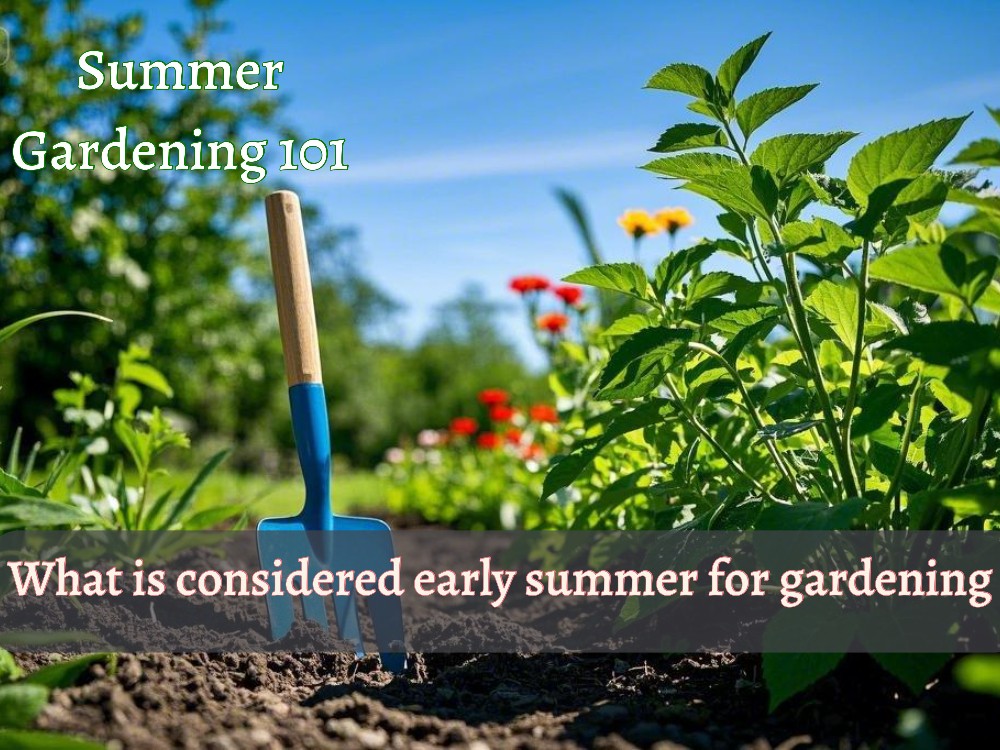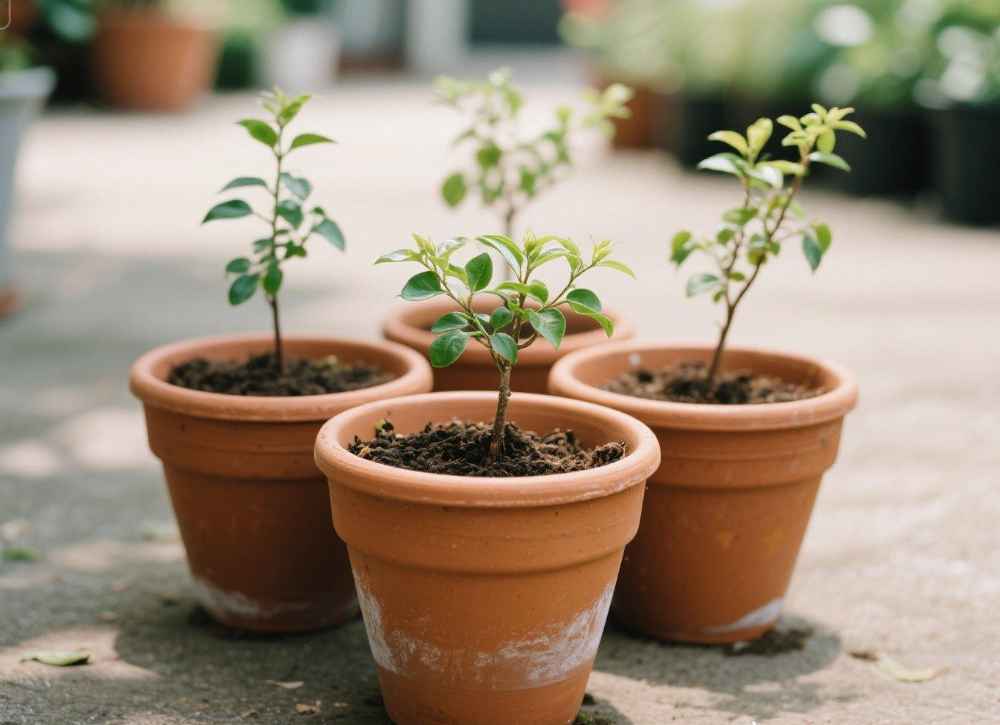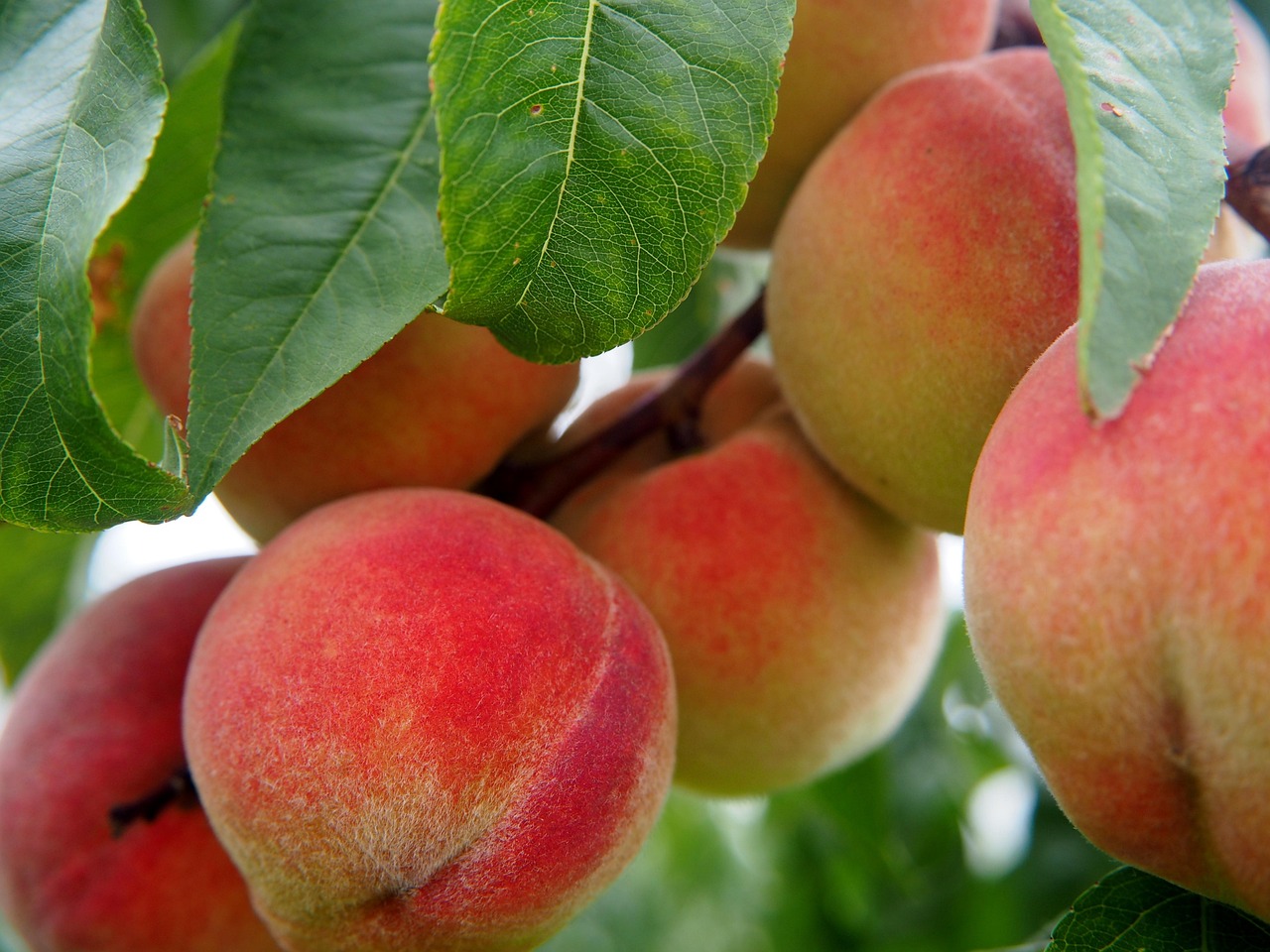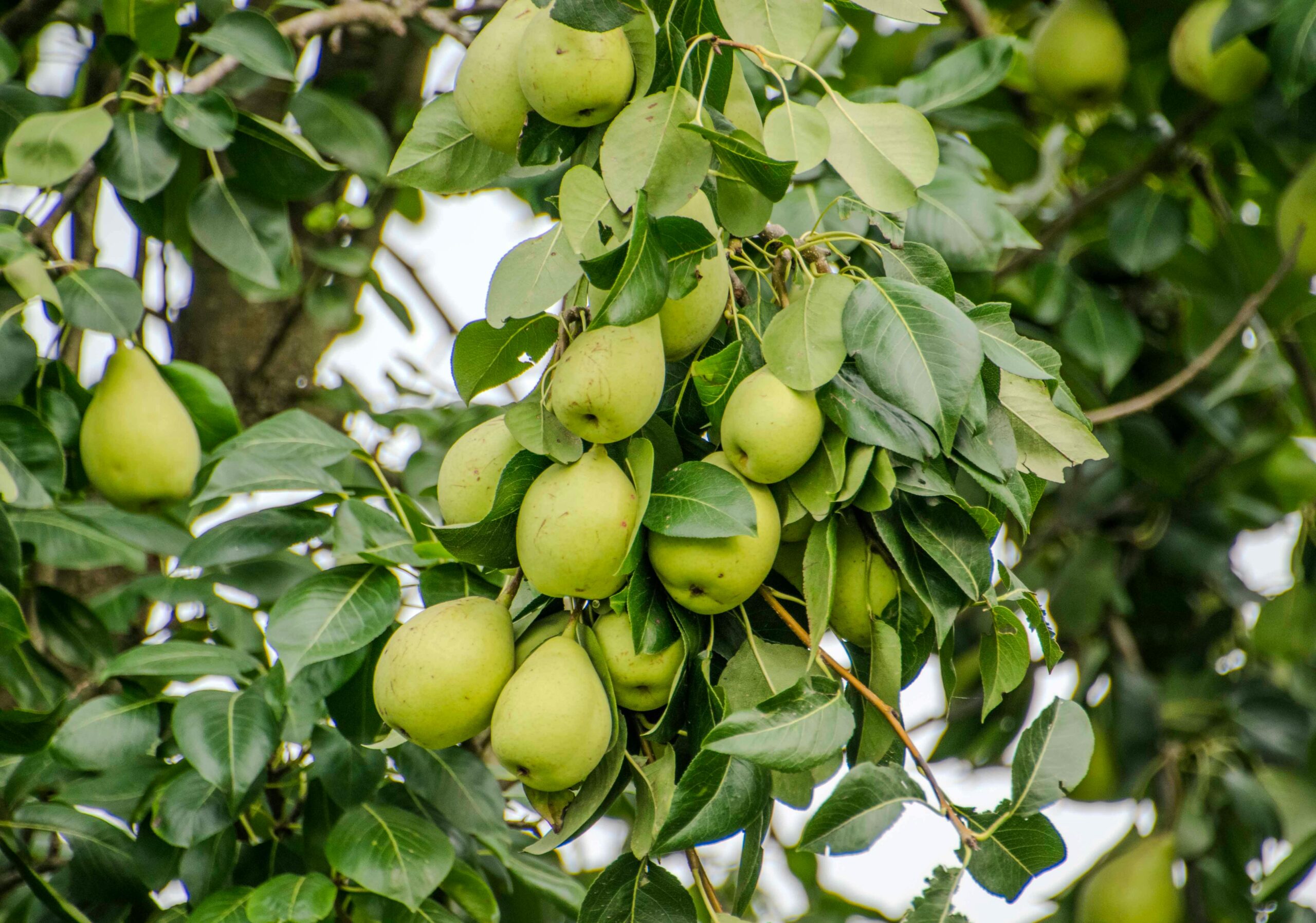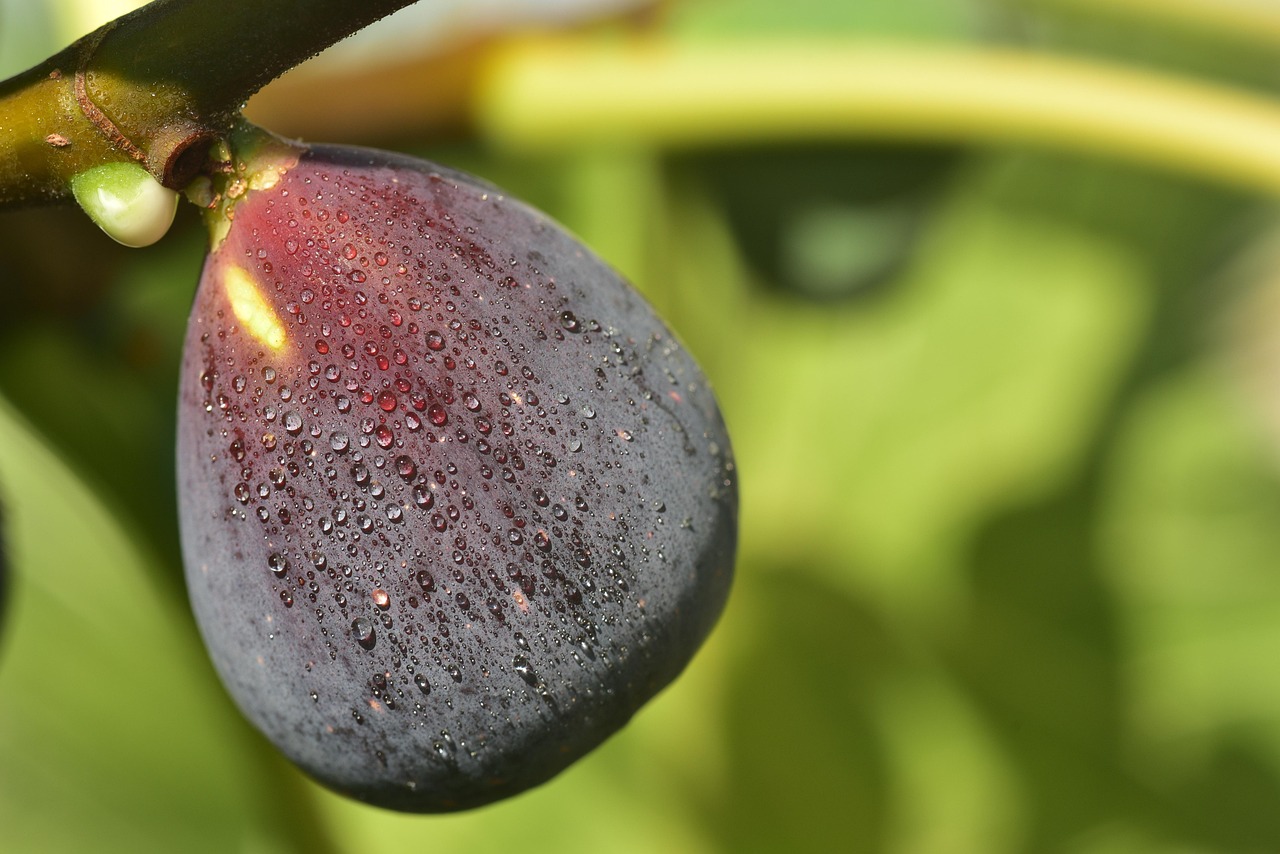As summer begins, a new life flourishes in the garden. That’s the time when days are lengthening, temperatures are becoming milder, and sunlight is warming the earth, creating incredible conditions for summer garden (heat-loving plants).
During the early stage of summer, the question “What is considered early summer for gardening, and what do you do?” may come to gardeners’ minds.
Shortly, gardening enthusiasts have to do many tasks for summer gardening to enhance their overall garden, such as
- Preparing the soil and adding compost or fertilizer.
- Growing summer plants from vegetative or non-vegetative propagation.
- Managing the watering schedule and handling common pests and disease issues.
Special Consideration and my message About Summer Gardening
To do seasonal gardening, you need to consider your local climate and seasonal changes to easily determine the best key dates for each gardening task to do in early summer.
Research and work on seasonal gardening based on gardening zones are continuing. Stay with us to get gardening guides according to your gardening zone.
Are you familiar with gardening zones? Gardening zones are a general system, that gives the estimated idea of plant survival according to climate. There are most commonly USDA zones, in which zone 1 is the coldest and zone 13 is the warmest. Discover your zone by entering your zip code!
Considering only temperature, especially through the gardening zones is not enough because other environmental factors (rainfall, soil type, sunlight, etc.) also affect plant growth directly or indirectly. Here’s how?
This content provides a general summer gardening guide that is important for each gardener to know whether in any region.
However, considering local climate, weather variations, and seasonal patterns is still crucial.
- What is Considered Early Summer For Gardening? (Summer Gardening)
- Why Summer Garening is Crucial?
- What to do During Early Summer for Gardening?
- Summer Gardening: Step 2 (Add a Mulch Layer Around Plants)
- Summer gardening: Step 3 (Create a watering schedule)
- Summer Gardening: Step 4 (Use appropriate fertilizer)
- Summer gardening: Step 5 (Control Pests and Diseases)
- Summer Gardening: Step 6 (Pruning and Maintenance)
- Summer gardening: Step 7 (Harvest the prepared vegetables and fruits)
- Summer Gardening: Step 8 (Grow New Summer Plants)
- Summer Plants PDF
What is Considered Early Summer For Gardening? (Summer Gardening)
The primary meaning of early summer for gardening is planting new heat-loving plants and caring for already established summer plants.
The general summertime is considered from late May to early September. In this term, the early summer will be from late May to mid-June.
Early Summer May Vary!
The time of the summer season is different in each region or area because it completely depends on the temperature, seasonal situations, and weather patterns.
- Cold Climate Areas(1 to 6): There, early summer is considered in late May to early June, depending on the local weather variations
- Temperature and warm regions (7 to 10): In this warmer area, summer begins from late April to early May, based on local weather changes.
- Hot Humid Areas (11 to 13): Summer starts here very early, usually from late March to early April. This summertime in tropical zones is also based on local regional climate variations.
Now, it is obvious that every gardener knows better about their local weather conditions. Understand effectively and start planning for the summer gardening.
Why Summer Garening is Crucial?
Summer is considered the most active season for several plants.
- Fast growth: Plants get proper sunlight for enough duration due to lengthy and sunny days, allowing heat-loving plants (tomatoes, peppers, sunflowers) to thrive quickly.
- Bountiful Harvest: Soil temperature also helps to establish roots strongly, and many vegetables and fruits, such as watermelon, pepper, and pumpkin are close to or completely ready for a bountiful harvest.
- Growing new Plants: Summer is the dynamic period for vegetative (cutting, layering, or division) and non-vegetative (planting directly seeds) propagation to expand plants.
- Natural microbes and insects are active: Bees and butterflies are active in summer, improving pollination and keeping the garden green and cheerful. However, some pest issues can occur, which can be managed with natural methods.
- Even the sleep time of some plants: Summer is also a dormant season for some winter plants, such as bleeding hearts, hostas, peonies, and trillium. So, caring for heat-sensitive plants is important so that they can rebloom next season.
What to do During Early Summer for Gardening?
Note: At the end of this content, you will get a free PDF of 30 summer plants and their requirements of soil type, mulch type, water amount, fertilizer amount, pruning method, and pest or disease issues.
Discover how environmental factors affect plant growth!
Summer gardening: Step 1 (Prepare the soil in early summer)

When summer starts, the soil surface becomes too rigid and moistureless, depending on the previous care. This soil type absorbs water hardly.
In some areas, soil can also be parched. While in humid areas, the soil becomes compacted and dry quickly due to high temperatures.
How to prepare the soil in Early Summer?
- Dig the soil with a garden fork to soften it.➝Areated soil.
- Add organic matter like compost or manure. ➝Better nutrition
- Arrange better drainage of the water system. ➝Root protection
- Keep the soil moist in the morning and evening. ➝Moisture retention.
- Use dry grass, leaves, straw, or old dry hay. ➝Soil stays cool
Pro Tip: If the soil is dry and sandy, add coconut coir or vermicompost to balance the moisture level. For container summer gardening, add perlite, vermiculite, or good-quality potting mix to maintain water for better root growth.
Hey! If you buy bulk garden soil, remember to store it properly. And during the container gardening process, if your potting soil remains, here’s how to store!
Summer Gardening: Step 2 (Add a Mulch Layer Around Plants)
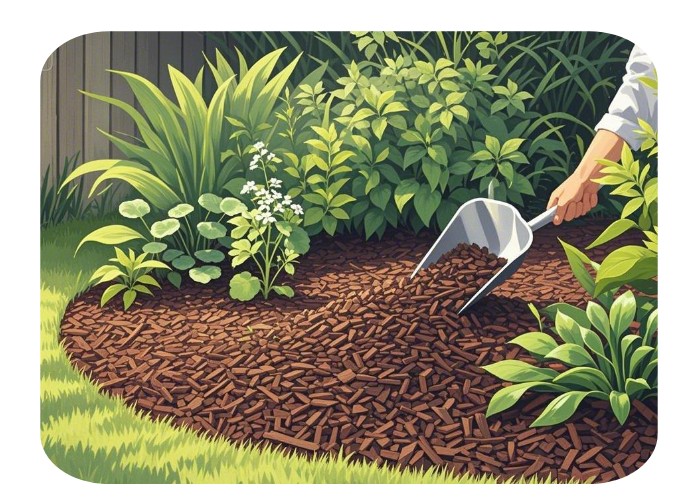
During summer, some biennials, perennials, and even annuals (impatiens, petunias, foxglove, delphinium, asparagus, and strawberries) require mulch to maintain moisture in their roots.
Because their lengthy growth cycle (up to one year) may be affected, weakening them for the next season to bloom. So, use straw, grass clippings, leaves, or cedar mulch. By the way, this mulch keeps the soil cool and gradually increases fertility.
Pro Tip: When using organic mulch, keep a thin layer of 2 to 3 inches and try to use cedar or cypress mulch, especially if there is a risk of termites.
Termites Alert!
Wood chips, straw, and bark mulch maintain moisture in the soil, attracting termites, particularly if mulch is wet or near the wood-based material.
Discover related topics
Summer gardening: Step 3 (Create a watering schedule)
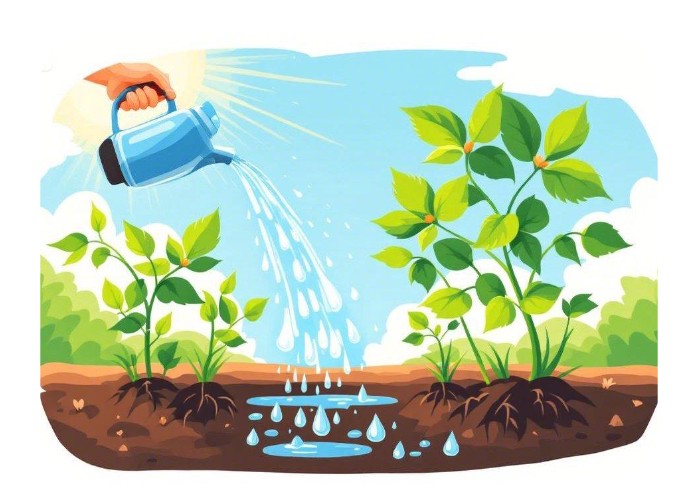
The big summer gardening challange? Water does not remain for enough time! Sandy and light soil dry out quickly, and water evaporates before absorption in the soil, wilting and suffering from heat-stress plants.
But with a smart strategy, you can maintain a watering schedule for summer gardening. Firstly, check signs that your plant really needs water or not and then follow the tips;
- Water deeply: Allow the water to reach fibrous roots to keep plants moist and green for a long time. Avoid wet soil as it cause root rot. Explore the difference between moist and wet soil!
- Water in the morning or evening: Watering in the afternoon causes 50% of the water to evaporate, so water during cooler times, i.e. morning or evening.
- Adopt drip irrigation system: Saving water and making water reach deeper and slower, drip irrigation is an incredible option.
- Try self-watering pots or methods: You can use self-watering pots for container gardening, and also try the DIY method; take a plastic bottle, make holes, and press near the roots to continue moisture.
Do you know? Adding compost or vermiculite stops water in the soil for a long time.
Summer Gardening: Step 4 (Use appropriate fertilizer)
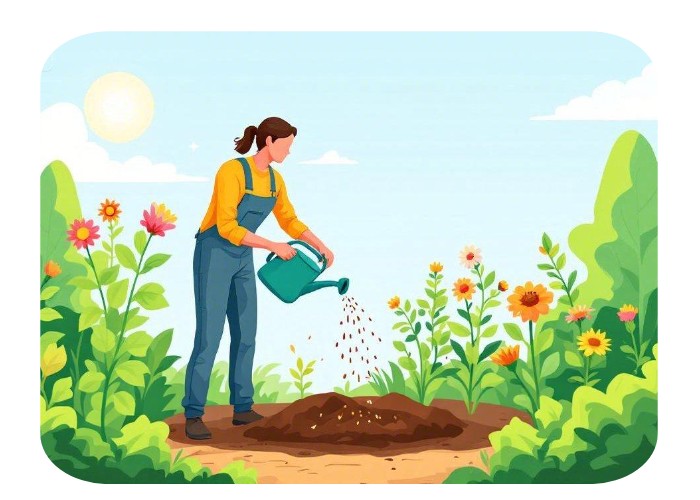
Fertilizing the garden has a key role in summer gardening. Summer is the growing season and plants require nutrients along the water and other care.
Generally, there are 2 types of fertilizer;
- Organic: (compost, manure, vermicompost) Release nutrients slowly
- Synthetic: (Potassium nitrate and calcium nitrate) Gives quick results.
These fertilizers include essential nutrients, such as Nitrogen (leafy plants), Potassium (fruity plants), phosphorus (flowers), Calcium Carbonate (balance the soil pH), etc.
For summer gardening plants, the balance of these nutrients is very important. Compost, seaweed extract, and slow-release fertilizers may be options for summer plants as they provide nutrients slowly, allowing plants to tolerate heat.
Summer gardening: Step 5 (Control Pests and Diseases)
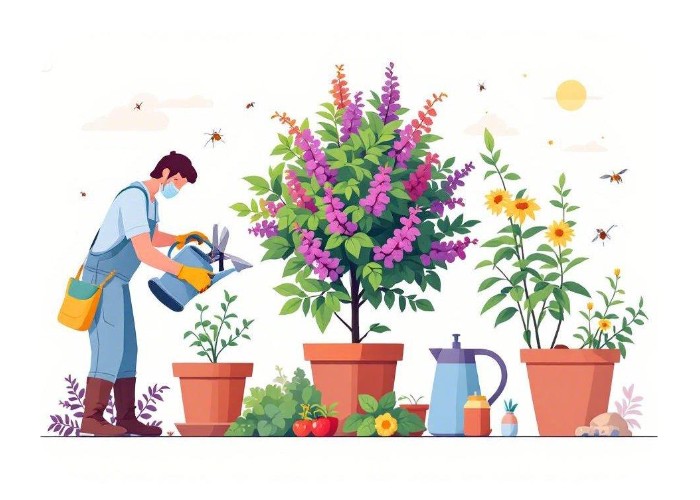
Heat-loving pests such as aphids, whiteflies, and caterpillars can attack summer garden. Additionally, high humidity and temperature also cause fungal disease. Also, add this step to your summer gardening journey;
Here’s how to control it if pests or disease issues occur;
- Spray neem oil in the morning and evening to prevent pest activity.
- Use a good mulch that does not attract insects like nematodes and termites.
- Ensure proper air circulation between plants in summer to avoid fungal disease.
Summer Gardening: Step 6 (Pruning and Maintenance)
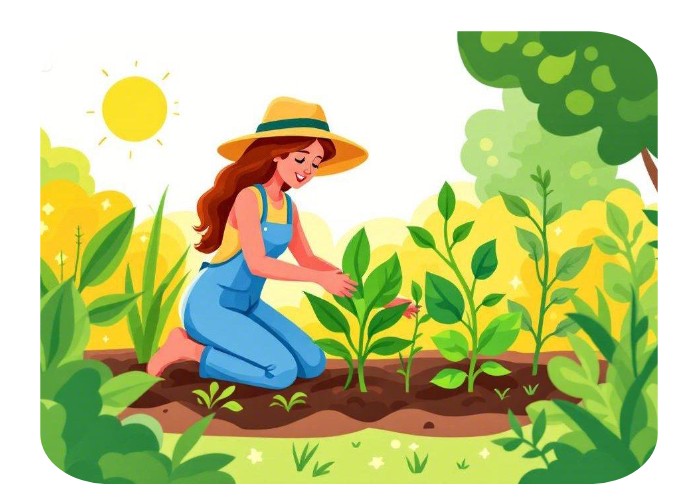
Right maintenance and pruning have a fundamental role in new healthy plant growth, especially when the plants are active in peak season.
- Cut the damaged and dead leaves to prevent wastage of moisture and nutrients.
- Remember to avoid over-pruning just shape the plant lightly to save plant energy.
- Keep sensitive plants under shade, especially when the temperature is too high like in tropical zones.
Still, your plants are not thriving? Here discover 10 hidden reasons behind it.
Summer gardening: Step 7 (Harvest the prepared vegetables and fruits)

This summer, I have to harvest tomatoes and other vegetables in my tiny garden. So, if you have also those edible plants that you planted the previous year, then summer can be the best time to harvest them.
Do you know? Harvest timing depends on the plant type whether its annual, biennial, or perennial. However, the season shows the plant preference! And summer is considered the time to harvest several crops.
Pick prepared plants in the morning, so that vegetables stay fresh and juicy, while tomatoes, peppers, cucumbers, and zucchini should be picked when fully ripe for the best flavor.
For example, tomatoes should be picked when fully colored and a little soft when you touch them. After you harvest, save seeds from heirloom plants for next year. It is also a good time to clean up your summer garden beds and be prepared for fall planting.
Summer Gardening: Step 8 (Grow New Summer Plants)
If your garden is filled with summer plants, you can grow more plants by using their vegetative parts (leaf, stem, and root) through plant cloning (vegetative propagation).
I mean you can expand your plants through cutting, layering, grafting, or division without seeds, which may be expensive.
However, if you have no gardening experience or you are just starting, you can use seeds to grow plants or buy seedlings from a nursery to transplant.
Just remember that each plant may be annual, biennial, or perennial, and their growth duration is also different. If you want a quick harvest, annual plants like tomatoes, cucumbers, or peppers would be the best option.
Additionally, you can take cuttings from your friend’s or neighbor’s plant. It will be a relation-friendly method like community gardening that will strengthen your gardening network and relationship.
You know that I had also taken some cuttings of rose plants from my close neighbor this summer!
Summer Plants PDF
Regarding cutting propagation on summer plants, discover how to check the plant’s ability for cutting propagation.
If you are interested in plant propagation, discover the related topics;
Plant materials list for propagation!
Cutting Propagation:
- Part 1: Definition and benefits
- Part 2: Types of Cuttings
- Ideal Environment or cuttings
Final Thoughts: Summer Gardening 101 GUIDE
Understanding summer gardening tasks is useful for all gardeners, as it allows them to easily determine and follow key steps for summer gardening.
Seasonal concepts vary on the region’s climate, such as in colder areas (Alaska and Canada), summers are milder while in tropical areas (Florida, Texas, Hawaii) summers are with intense heat.
It completely depends on the long-term climate of that region. There is a big difference between climate and weather but both are attached to each other.
Summer is the active and growing season for many summer crops like tomatoes, okra, cucumber, bell pepper, and watermelon, not only for their growth but also for thier planting.
It happens that summer plants that are already in your garden give you a bountiful harvest (if you care properly), and summer plants that you want to grow newly this summer, take benefit from preference season, establishing their roots gently in the ground.
Depending on the plant type (Annuals, Biennials, and Perennials), you will get a harvest again in summer.
